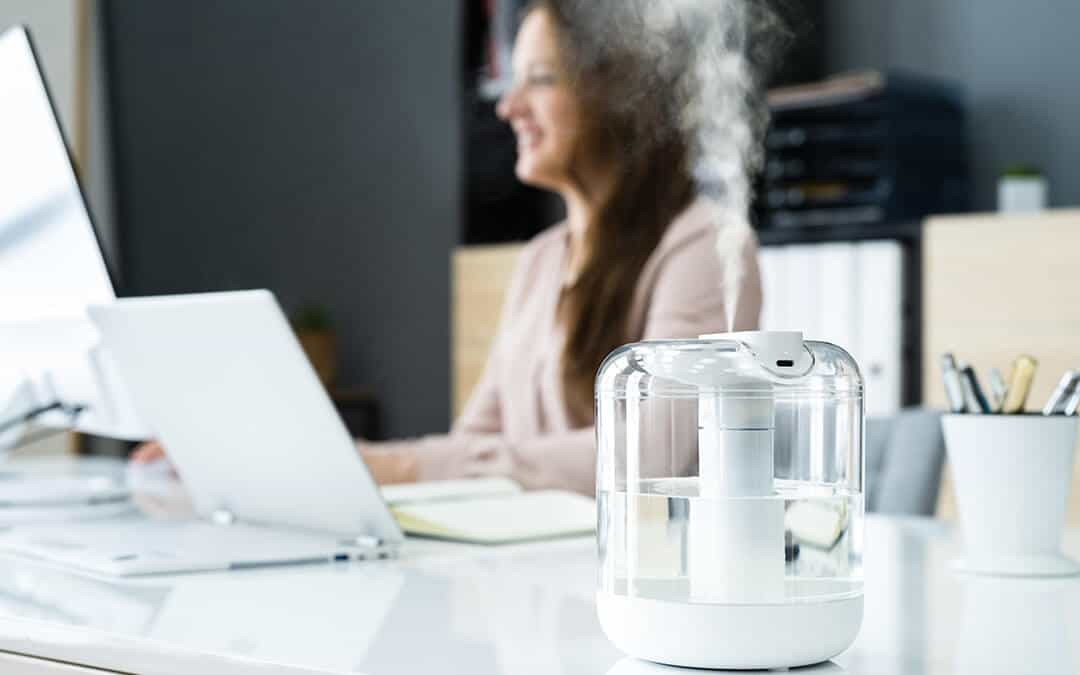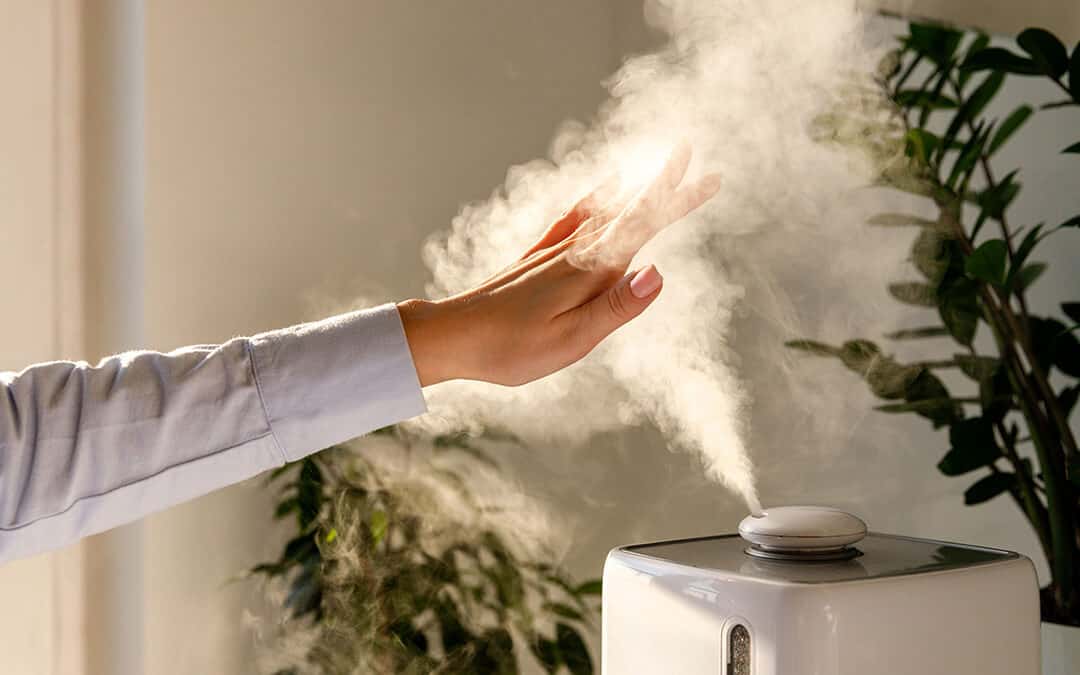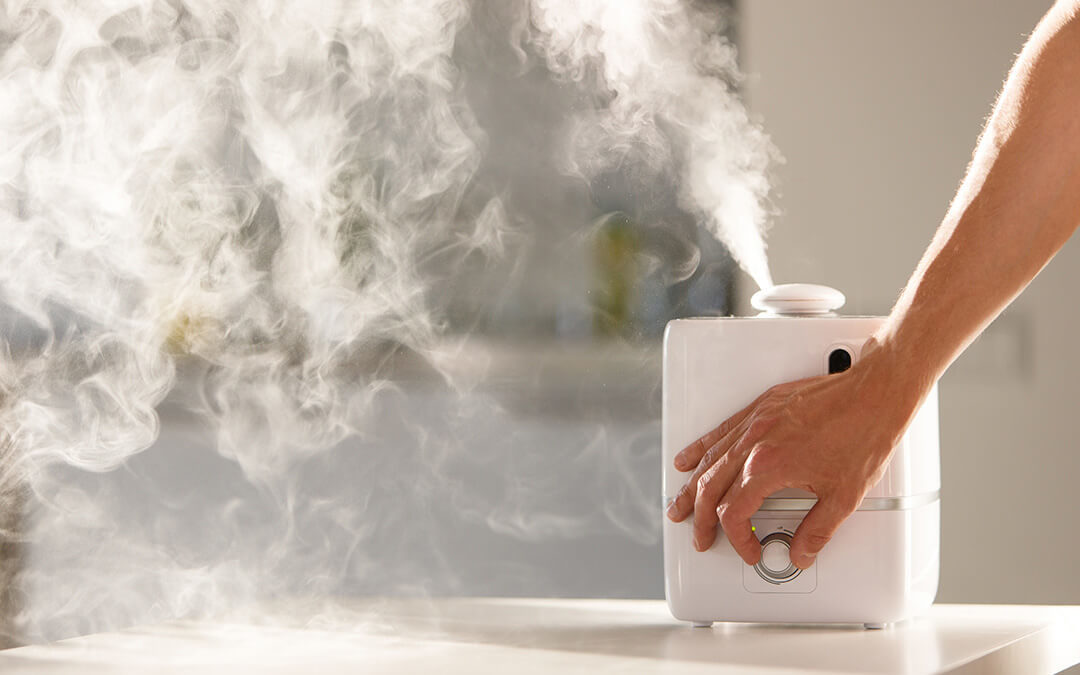Oxygen is essential to our survival and makes up about 20% of the air we breathe. But during dry winter months and in drier climates, the air can become harsh and dehydrating. However, humidifiers are a great way to keep air moisturized and increase general comfort. And for those receiving medical oxygen therapy, humidifiers can also offer much-needed relief.
Medical Humidifiers vs. Home Humidifiers
Medical humidifiers are used to humidify supplemental oxygen. Smaller and generally part of an oxygen therapy system, these humidifiers provide comfort for patients in situations where the medical oxygen being delivered might be too dry to breathe. As dry air can irritate the throat and sinuses, medical humidifiers provide long-lasting moisture and comfort.

Home humidifiers do a similar service but on a larger scale. Just as medical oxygen can be drying, so can the air in your home. Dry air can cause chapped or cracked lips, bloody or runny noses, scratchy or sore throats, coughing, and headaches, and exacerbate allergies and respiratory symptoms. But by using a humidifier in the home, whether single room and the entire house, these issues can be alleviated.
Benefits Of Humidified Air
Humidifiers, particularly medical ones, are designed to produce and disperse water vapor, adding moisture to oxygen and restoring healthy levels of humidity. For example, when using medical oxygen, the continual passage of air through your nose and sinuses will create a very dry environment over time. Humidifiers can neutralize the damaging effects of dry air on sinuses and lungs. In the home, humidifiers can counteract any moisture-evaporating effects from heaters and more. In addition to relieving congestion and other respiratory problems, humidifiers help eliminate the static electricity that produces shocks, makes clothes clingy, and flattens hair.
Types Of Humidifiers
There are a variety of humidifiers that exist to provide much-needed moisture, whether during oxygen therapy or just in the home.
Bubble humidifiers, or more commonly known as bubblers, contain water to humidify dry oxygen from a medical oxygen source. As oxygen passes through the humidifier, it combines with water vapor, delivering humidified air to the patient.

Central humidifiers are designed to control humidity levels throughout the entire home. They are built into a home’s heating and air conditioning system, adding moisture to forced airflow, introducing a moisturized climate for those who need it.
Impeller humidifiers produce a cool, invisible mist of water that has been vaporized by an internal system of rapidly rotating discs. The motion of the discs sends microscopic droplets into the air, making it perfect for single rooms.
Ultrasonic humidifiers use vibrations to vaporize water. Moisture is distributed by vibrating discs that create small droplets of water. The droplets are blown into the air, producing a visible mist of cool moisture.
Steam humidifiers heat water to create steam. After the heated water is cooled, the resulting vapor is pushed out into the room by an internal fan. Because steam humidifiers boil water to create steam, parts of their external surfaces may be hot to the touch. For this reason, they should be used with caution around children and pets.
Humidifier Care
Humidifier components should be washed and sterilized regularly, to prevent mineral buildup and scale deposits that may wear down machine parts over time. Keeping a clean humidifier helps prevent the potentially hazardous emission of particles during everyday use. And always be sure to use filtered water when using your humidifier.
CalOx carries the best medical oxygen for medical humidifiers and supplemental oxygen concentrators. Contact us to learn more about the benefits and uses of medical oxygen.
